Its time to pick the fruit of the Blackthorn.
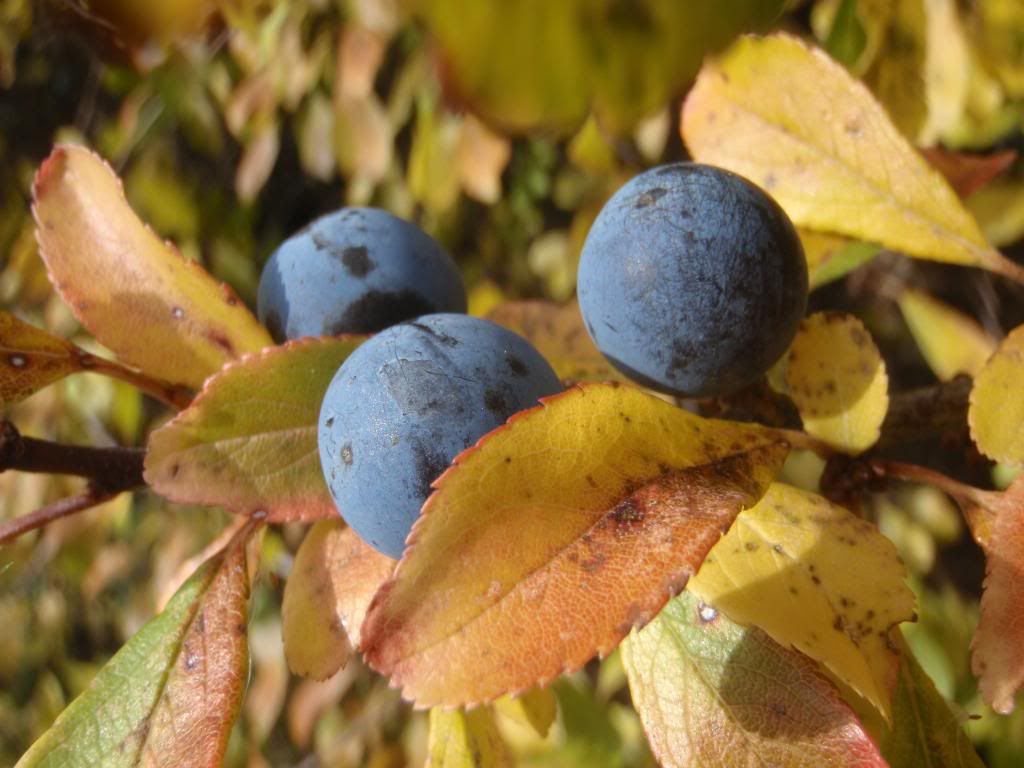
With this in mind my wife and I went out on Halloween to pick some sloes from an old hedge near us in Rutland. Gorgeous day for a walk with the local hunt pharping the distance we picked two kilos of lovely sloes.
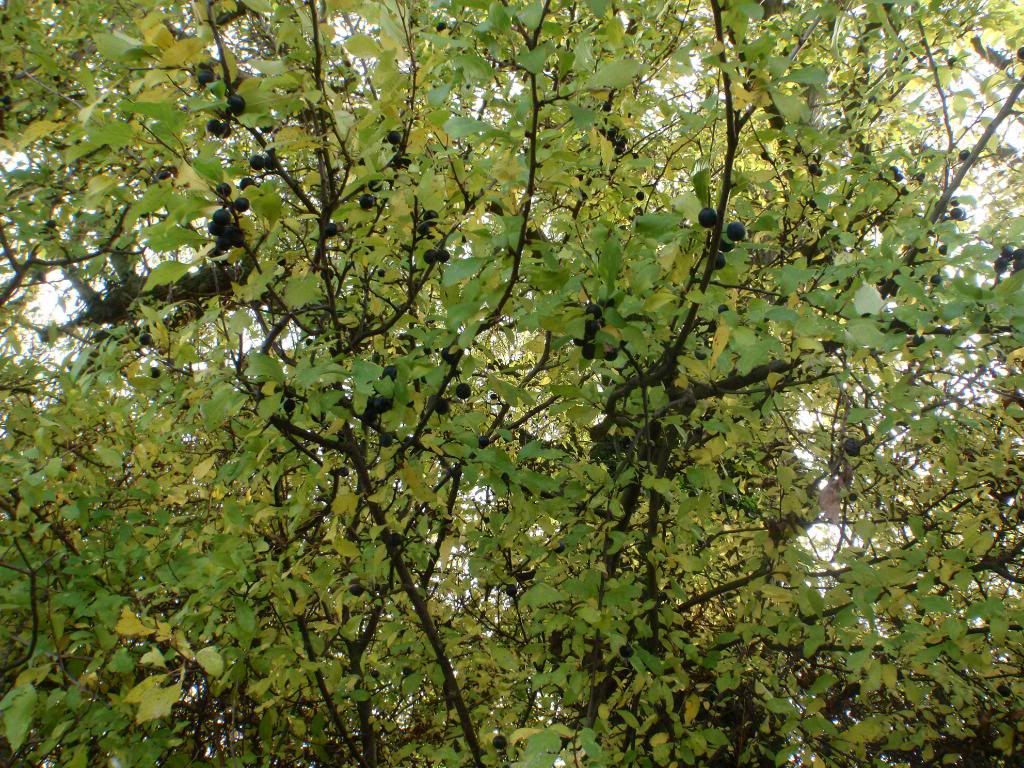
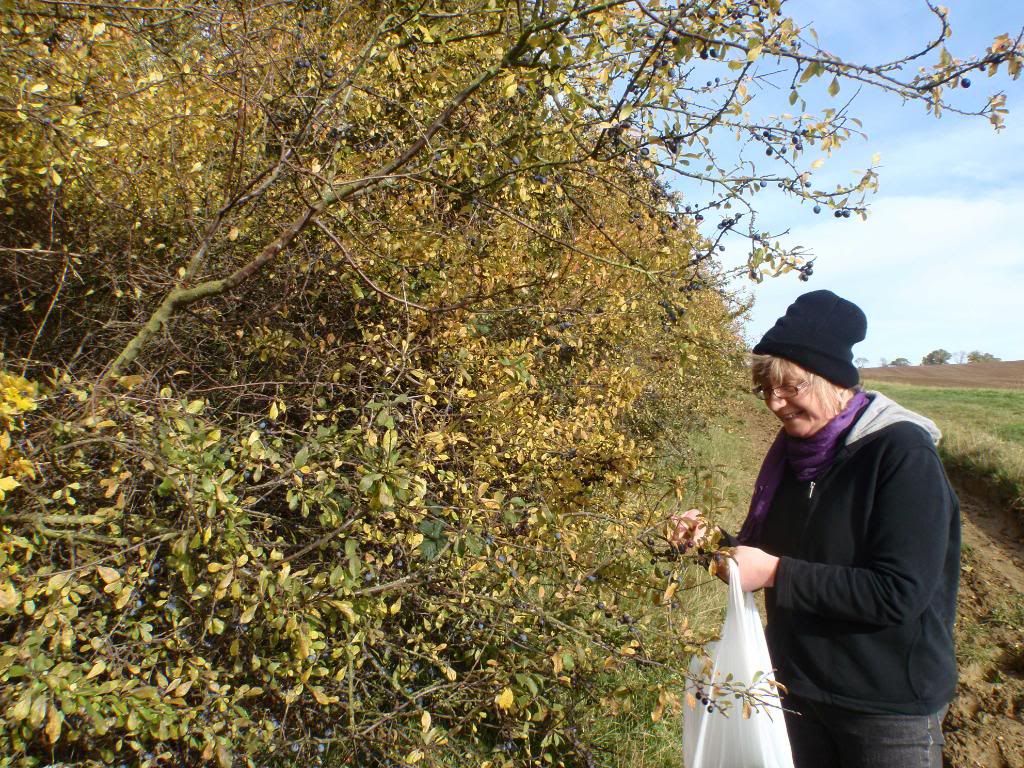
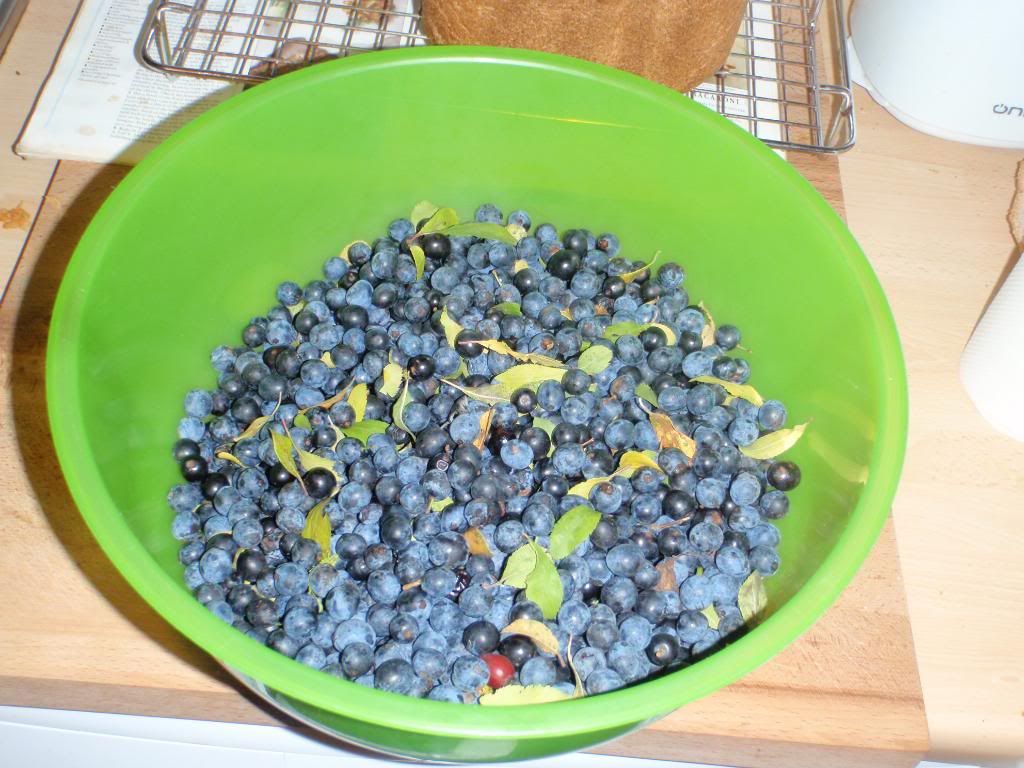
Once i got them home I cleaned and rinsed them before mashing them with the end of a rolling pin in my fermentation bucket.
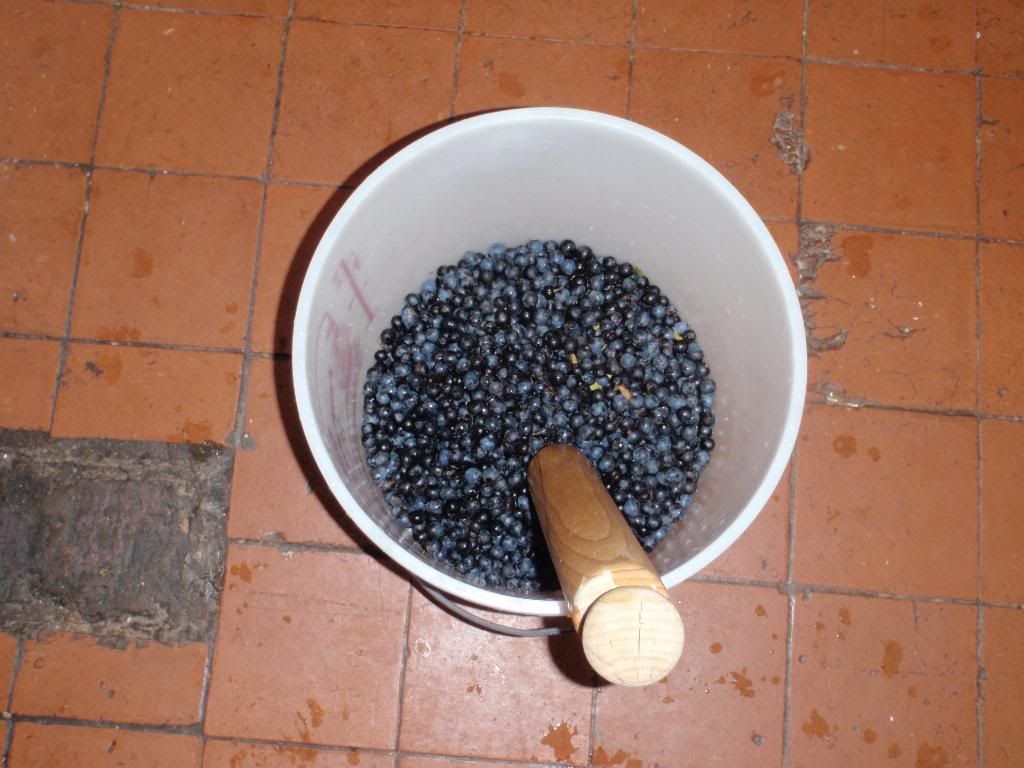
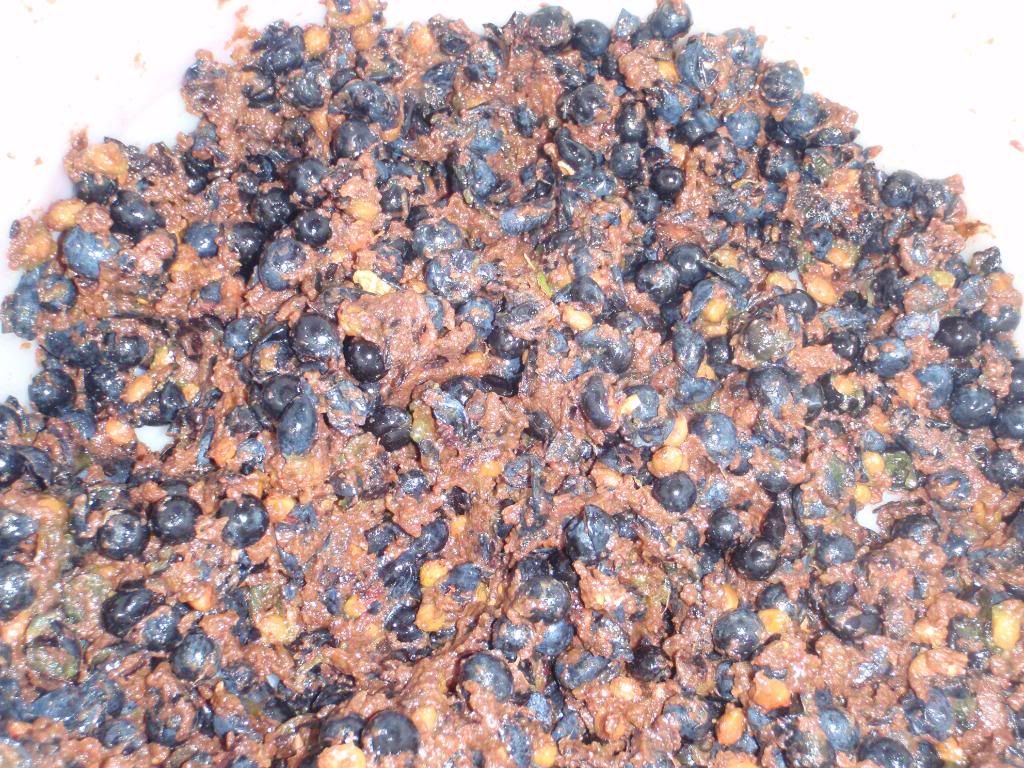
Boiled up a gallon of water and added 2 kg of sugar and added this to the bucket making up to two gallon.
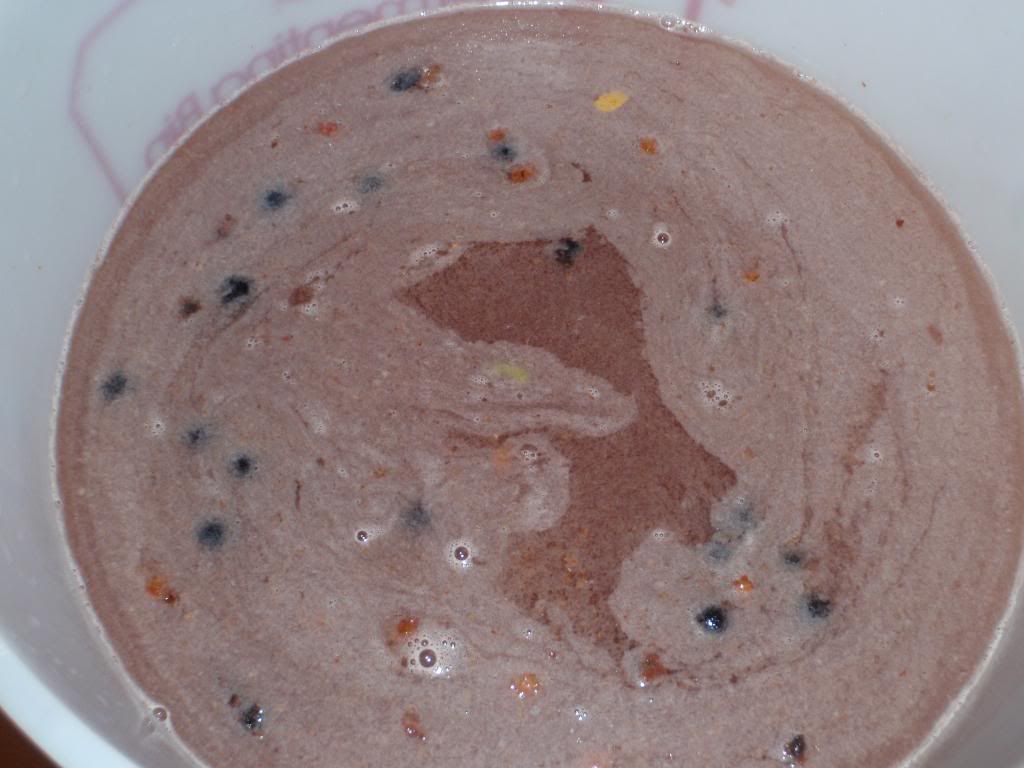
Added the juice of two lemons, two teaspoons of yeast nutrient a strong cup of tea and a tsp of pectin enzyme. A teaspoon of all purpose yeast and left it to ferment on the pulp for two weeks. This is what it looked like after a few days.
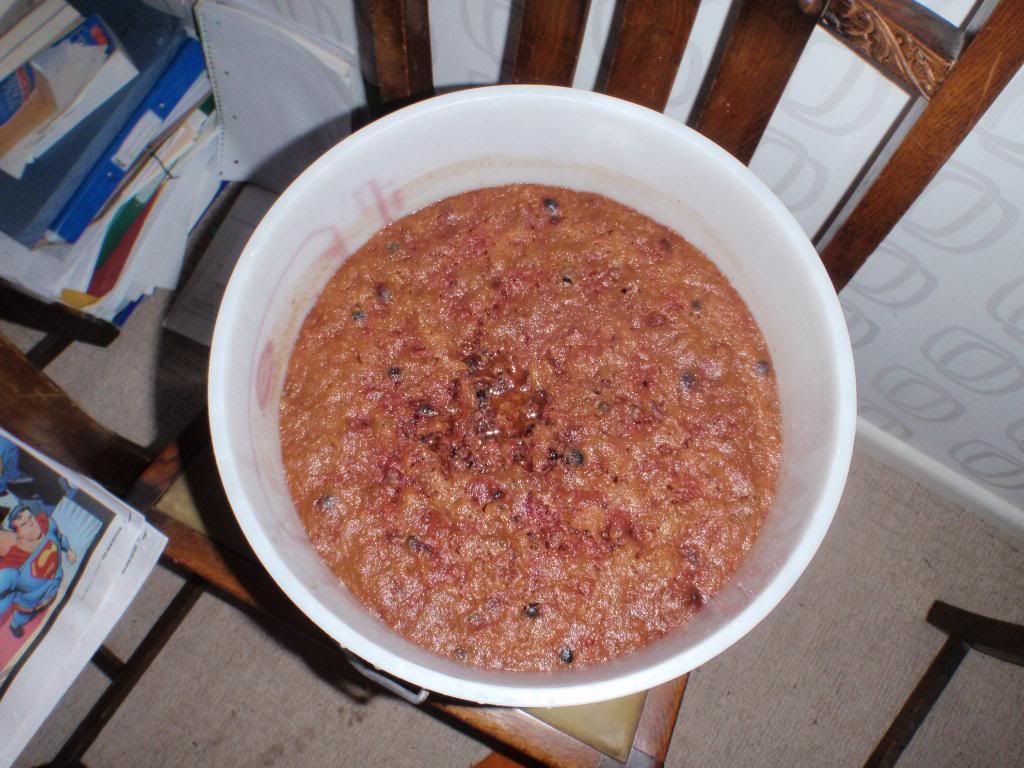
Strained and poured in to two demijohns a fortnight later...just look at that colour!
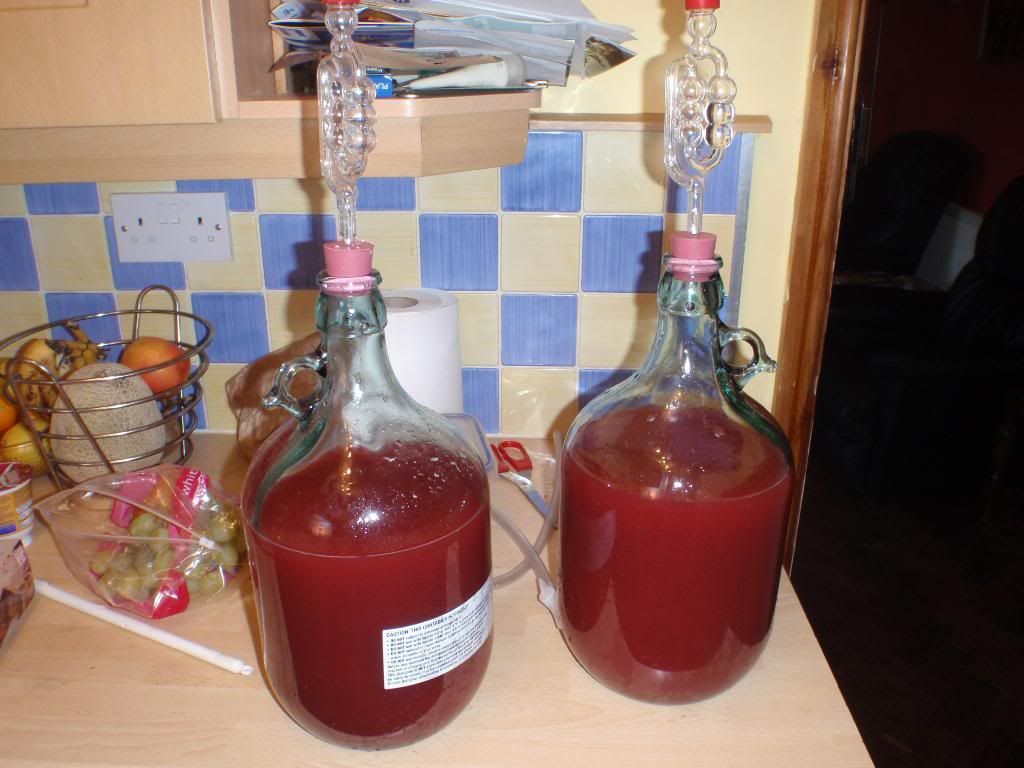
Topped up with boiled water and I will rack it in a couple of days of the yeast from the initial fermentation which went in when I strained the fruit.
Ferment out and rack as usual. Store for 12 months in a DJ the bottle. Leave for two months and drink! That will be Christmas 2011!
We picked these on Halloween so i'm calling Sloween Wine.
Here are some folklore and herbalist notes on the ancient British Blackthorn.
Enjoy!
Porky
Snort!
BLACKTHORN
Blackthorn trees and shrubs are said to be held sacred by fairies. This berry has been found in archaeological sites from the Mesolithic and Iron Age periods (8000-2700 BC), proving that the blackthorn berry was a part of early manâs diet. Sloe berries are very tonic bitters. They are astringent, and stimulate the metabolism, clean the blood, and are used as a laxative and diuretic. They help with indigestion, eczema, herpes, allergies, colds, catarrh, neurosis, weak heart, kidney stones, skin, bladder, and prostrate problems. They disperse toxins. In 17th and 18th Century, sloes were brewed as a purgative to treat âfluxes in the belly. âThe fruit and leaves of Blackthorn contain tannins, organic acids, sugars and vitamin C. Steeped in boiling water, the flowers have a mild diuretic, tonic and laxative properties. The dried fruits are used to treat bladder, kidney and stomach disorders. The liquid from the boiled leaves can be used as a mouthwash for sore throat, tonsillitis and laryngitis. It is also good for circulations, blood strengthening, and nutrient absorption.â Blackthorn is depicted in many fairytales throughout Europe as a tree of ill omen. Called Straif in the Ogham, this tree has the most sinister reputation in Celtic tree lore. The English word âstrifeâ is said to derive from this Celtic word. A long hard winter is referred to as a Blackthorn Winter.

To Witches, it often represents the dark side of the Craft. It is a sacred tree to the Dark, or Crone aspect of the Triple Goddess, and represents the Waning and Dark Moons. Blackthorn is known as âthe increaser and keeper of dark secretsâ.
The tree is linked with warfare, wounding and death, associated with the Scottish Cailleach - the Crone of Death, and the Irish Morrigan. In Scotland, winter begins when the Cailleach (also the Goddess of Winter) strikes the ground with Her Blackthorn staff.
According to Christian folklore, Blackthorn is seen as a sinister tree and associated with Witches. Blackthorn was often used for âbinding and blasting.â A black rod is a Blackthorn wand with fixed thorns on the end, used to cause harm to others. In British folklore, a Witch will use a Blackthorn stang in rituals of cursing. The sharp thorns were reputedly used by English witches to pierce poppets in their curses, called the âpins of slumberâ. In South Devon folklore in England, Witches were said to carry Blackthorn walking sticks, with which they caused much local mischief. Witches and heretics were burned on Blackthorn pyres. The Devil was said, in Medieval times, to prick his followerâs fingers with the thorn of a Blackthorn tree.
Blackthorn is also associated with Witchcraft in Scotland. In 1670, in Edinburgh, Major Thomas Weir was burned as a Witch along with his most powerful magical tool - a Blackthorn staff, carved with a Satyrs head, which was said to have fantastic powers - it was even able to fly through the air. Major Weir claimed that he received this magic staff from the Devil, but it is more likely that he obtained it while he served as an officer under General Leslie in Ireland. The Major was a pious Covenanter, and people came from miles around to hear his sermons. He was considered the âSaint of West Bowâ, until one day in 1670, instead of his usual sermon, he confessed years of debauchery with his sister, Jean, to the congregation. Brother and sister were both tried and condemned to death. His ghost, along with the infamous Blackthorn staff, is still said to haunt the Edinburgh West Bow district. The Irish cudgel is called a bata, or more popularly, a shillelagh, (named for the Shillelagh forest near Arklow, in County Wicklow). Every young boy was trained to defend himself with this Irish fighting stick. Although sometimes made from Oak, Ash or Holly, the shillelagh is usually made from Blackthorn, which is hard, strong, plentiful, and has a convenient knobâ formed from the root of the shrub. The black bark is especially tough. The wood was cured by burying it in a dung heap or smearing it with butter, then placing it in the chimney.
Blackthorn can be used in spells of protection as well. In Irish tales, heroes were aided by the Blackthorn tree - if they threw a twig of Blackthorn after them, it would take root and form an impenetrable hedge or woods, thwarting the pursuing giant. In England Witches would carve the Norse rune thorn on a Blackthorn stave for protection.
Often in fairytales, such as âSleeping Beautyâ, Blackthorn forms the thick, impenetrable thorn bramble that hides the magic castle from intruders and princes alike! In order to prove worthy, the prince must cut through this thorn forest to rescue the princess.
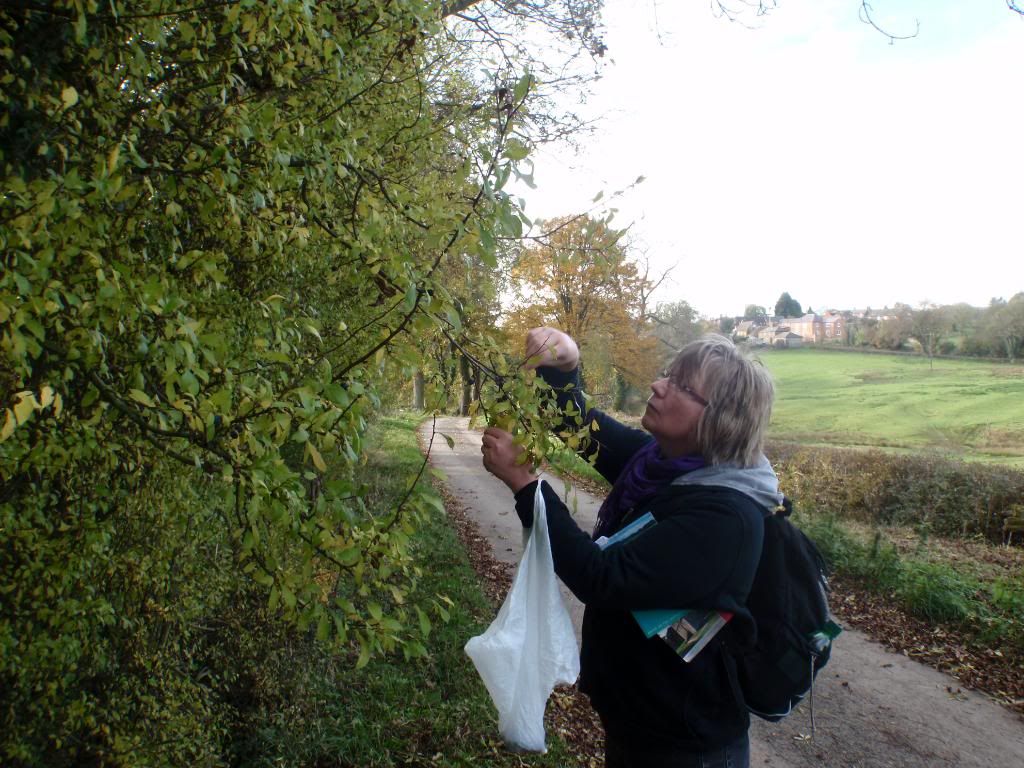
My Princess the Porkessa de Poop
Blackthorn is said to bloom on Christmas Eve, as is the holy thorn at Glastonbury. It is one of the trees, which were reputed to form the thorny crown of Christ at His crucifixion.
Where Blackthorn grows near its sister plant, Hawthorn, the site is especially magical. Blackthorn often topped the Maypole entwined with Hawthorn, and is called âMother of the Woodsâ. At New Year, celebrants made Blackthorn crowns, which they burned in the New Yearâs fire. The ashes were used to fertilize the fields. Blackthorn was sometimes woven into wreaths with Mistletoe to bring luck in the coming year, and the garlands used to wassail the Apple trees.
Spooky!
Porkers
Snort!

With this in mind my wife and I went out on Halloween to pick some sloes from an old hedge near us in Rutland. Gorgeous day for a walk with the local hunt pharping the distance we picked two kilos of lovely sloes.



Once i got them home I cleaned and rinsed them before mashing them with the end of a rolling pin in my fermentation bucket.


Boiled up a gallon of water and added 2 kg of sugar and added this to the bucket making up to two gallon.

Added the juice of two lemons, two teaspoons of yeast nutrient a strong cup of tea and a tsp of pectin enzyme. A teaspoon of all purpose yeast and left it to ferment on the pulp for two weeks. This is what it looked like after a few days.

Strained and poured in to two demijohns a fortnight later...just look at that colour!

Topped up with boiled water and I will rack it in a couple of days of the yeast from the initial fermentation which went in when I strained the fruit.
Ferment out and rack as usual. Store for 12 months in a DJ the bottle. Leave for two months and drink! That will be Christmas 2011!
We picked these on Halloween so i'm calling Sloween Wine.
Here are some folklore and herbalist notes on the ancient British Blackthorn.
Enjoy!
Porky
Snort!
BLACKTHORN
Blackthorn trees and shrubs are said to be held sacred by fairies. This berry has been found in archaeological sites from the Mesolithic and Iron Age periods (8000-2700 BC), proving that the blackthorn berry was a part of early manâs diet. Sloe berries are very tonic bitters. They are astringent, and stimulate the metabolism, clean the blood, and are used as a laxative and diuretic. They help with indigestion, eczema, herpes, allergies, colds, catarrh, neurosis, weak heart, kidney stones, skin, bladder, and prostrate problems. They disperse toxins. In 17th and 18th Century, sloes were brewed as a purgative to treat âfluxes in the belly. âThe fruit and leaves of Blackthorn contain tannins, organic acids, sugars and vitamin C. Steeped in boiling water, the flowers have a mild diuretic, tonic and laxative properties. The dried fruits are used to treat bladder, kidney and stomach disorders. The liquid from the boiled leaves can be used as a mouthwash for sore throat, tonsillitis and laryngitis. It is also good for circulations, blood strengthening, and nutrient absorption.â Blackthorn is depicted in many fairytales throughout Europe as a tree of ill omen. Called Straif in the Ogham, this tree has the most sinister reputation in Celtic tree lore. The English word âstrifeâ is said to derive from this Celtic word. A long hard winter is referred to as a Blackthorn Winter.

To Witches, it often represents the dark side of the Craft. It is a sacred tree to the Dark, or Crone aspect of the Triple Goddess, and represents the Waning and Dark Moons. Blackthorn is known as âthe increaser and keeper of dark secretsâ.
The tree is linked with warfare, wounding and death, associated with the Scottish Cailleach - the Crone of Death, and the Irish Morrigan. In Scotland, winter begins when the Cailleach (also the Goddess of Winter) strikes the ground with Her Blackthorn staff.
According to Christian folklore, Blackthorn is seen as a sinister tree and associated with Witches. Blackthorn was often used for âbinding and blasting.â A black rod is a Blackthorn wand with fixed thorns on the end, used to cause harm to others. In British folklore, a Witch will use a Blackthorn stang in rituals of cursing. The sharp thorns were reputedly used by English witches to pierce poppets in their curses, called the âpins of slumberâ. In South Devon folklore in England, Witches were said to carry Blackthorn walking sticks, with which they caused much local mischief. Witches and heretics were burned on Blackthorn pyres. The Devil was said, in Medieval times, to prick his followerâs fingers with the thorn of a Blackthorn tree.
Blackthorn is also associated with Witchcraft in Scotland. In 1670, in Edinburgh, Major Thomas Weir was burned as a Witch along with his most powerful magical tool - a Blackthorn staff, carved with a Satyrs head, which was said to have fantastic powers - it was even able to fly through the air. Major Weir claimed that he received this magic staff from the Devil, but it is more likely that he obtained it while he served as an officer under General Leslie in Ireland. The Major was a pious Covenanter, and people came from miles around to hear his sermons. He was considered the âSaint of West Bowâ, until one day in 1670, instead of his usual sermon, he confessed years of debauchery with his sister, Jean, to the congregation. Brother and sister were both tried and condemned to death. His ghost, along with the infamous Blackthorn staff, is still said to haunt the Edinburgh West Bow district. The Irish cudgel is called a bata, or more popularly, a shillelagh, (named for the Shillelagh forest near Arklow, in County Wicklow). Every young boy was trained to defend himself with this Irish fighting stick. Although sometimes made from Oak, Ash or Holly, the shillelagh is usually made from Blackthorn, which is hard, strong, plentiful, and has a convenient knobâ formed from the root of the shrub. The black bark is especially tough. The wood was cured by burying it in a dung heap or smearing it with butter, then placing it in the chimney.
Blackthorn can be used in spells of protection as well. In Irish tales, heroes were aided by the Blackthorn tree - if they threw a twig of Blackthorn after them, it would take root and form an impenetrable hedge or woods, thwarting the pursuing giant. In England Witches would carve the Norse rune thorn on a Blackthorn stave for protection.
Often in fairytales, such as âSleeping Beautyâ, Blackthorn forms the thick, impenetrable thorn bramble that hides the magic castle from intruders and princes alike! In order to prove worthy, the prince must cut through this thorn forest to rescue the princess.

My Princess the Porkessa de Poop
Blackthorn is said to bloom on Christmas Eve, as is the holy thorn at Glastonbury. It is one of the trees, which were reputed to form the thorny crown of Christ at His crucifixion.
Where Blackthorn grows near its sister plant, Hawthorn, the site is especially magical. Blackthorn often topped the Maypole entwined with Hawthorn, and is called âMother of the Woodsâ. At New Year, celebrants made Blackthorn crowns, which they burned in the New Yearâs fire. The ashes were used to fertilize the fields. Blackthorn was sometimes woven into wreaths with Mistletoe to bring luck in the coming year, and the garlands used to wassail the Apple trees.
Spooky!
Porkers
Snort!





